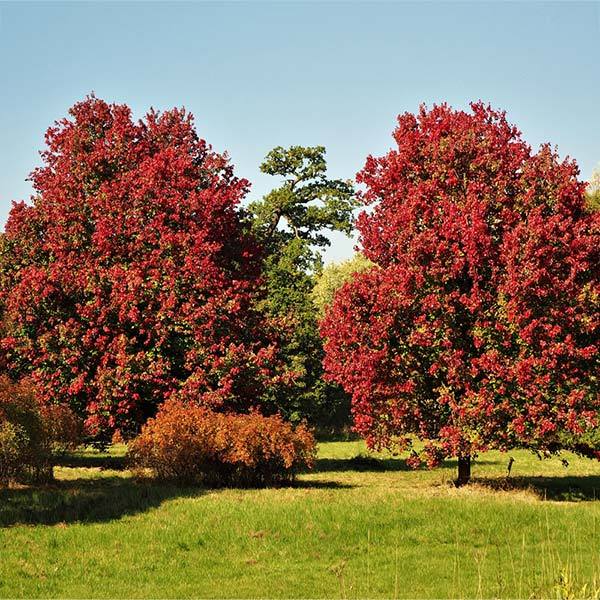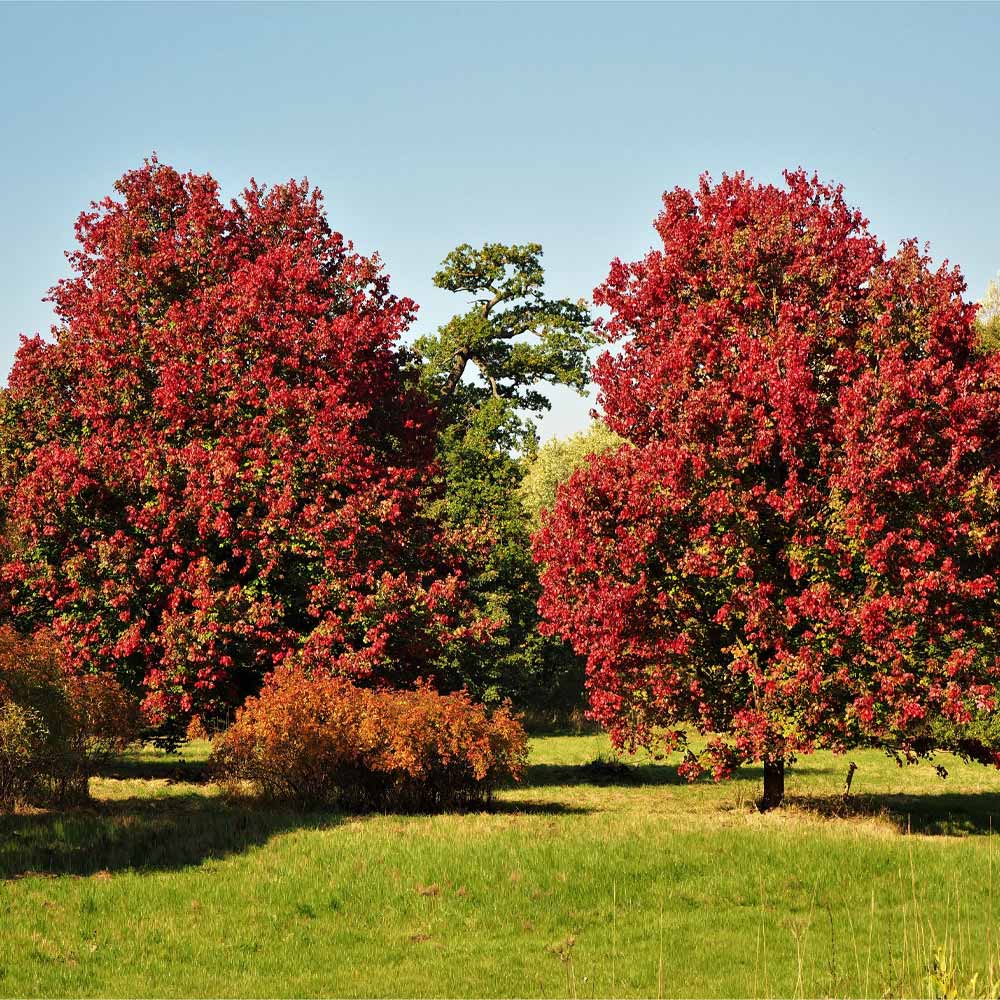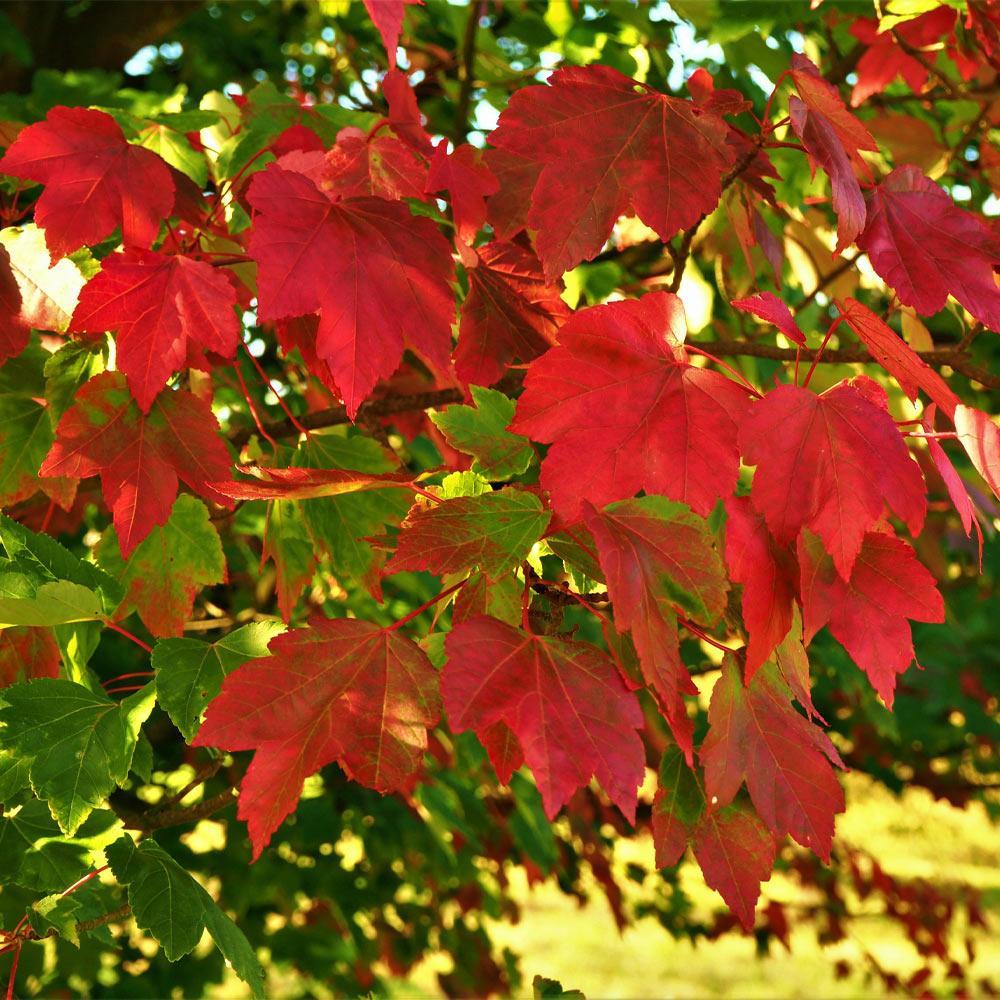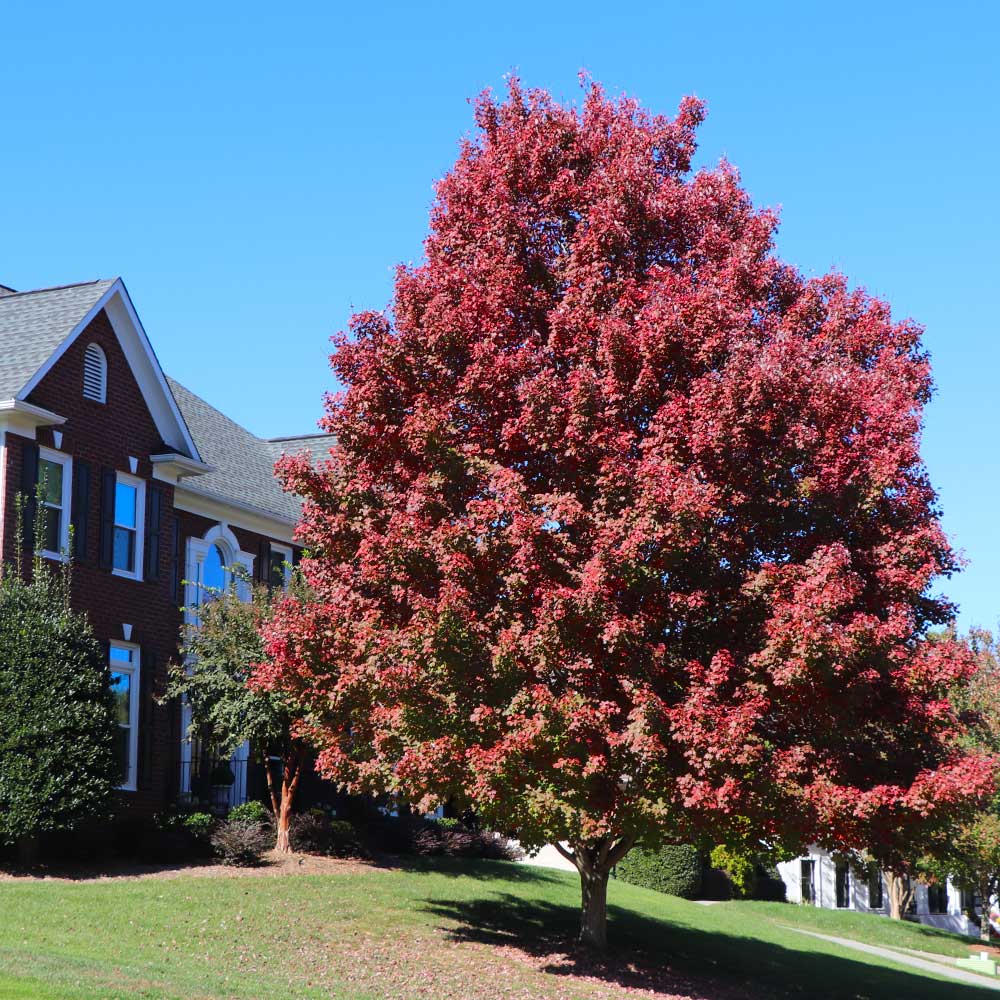The Brightest Red Fall Foliage Available
Why October Glory Red Maple Trees?
An improved cultivar over all other Red Maple Trees, the October Glory boasts superior red color that's truly dazzling. In fact, it's got some of the brightest red color available despite the fact that it requires minimal attention.
Even better? Its leaves drop later in the autumn season than other trees, so you have more time to enjoy the show. The October Glory's proud display of red foliage shines while other trees are bare. And in the spring, it produces bold red flowers that pop against the backdrop of vibrant green, all growing effortlessly. Hours spent toiling in the garden are a thing of the past - but with the October, you'll still have the best landscape on the block.
Why Fast-Growing-Trees.com is Better
You get reliable color that is less dependent on the weather as other maples. Plus, your October Glories will even grow in warmer climates - areas not typically suited for trees that specialize in fall color.
But the best part is that we’ve planted, grown and nurtured your October Glory Red Maple Tree for absolute best results. We’ve meticulously cared for each tree at our nursery, months ahead of time. And now, you get a proven performer with more developed branching and a healthier, fuller root system.
Order your trees soon because supplies are limited for this always-popular tree! Get your October Glory today.
Planting & Care
1. Planting: Though it's tolerant of soggy soils, October Glory prefers well-drained soil and full sun exposure (at least 6 to 8 hours of direct sunlight daily). When you're ready to plant, dig a hole three times the width of the root ball and as deep. Plant the root ball in the hole and backfill with enriched, loose soil. Water thoroughly after the root ball has been established and place a layer of thick protective mulching over the topsoil to control for weeds, pests, and suckers.
2. Watering: The October Glory Maple will appreciate a minimum of one and a half inches of water per week, whether from rainfall or irrigation. This translates to about one thorough watering from the garden hose each week (water for about 30 seconds to 1 minute).
3. Fertilizing: Use a slow-release fertilizer in a 10-10-10 formula twice per month during the growing season. Cease fertilizing when the tree is nearing its dormancy stage.
4. Pruning: Prune maple trees during winter or early spring before bud break, when they are fully dormant. This helps minimize stress on the tree and reduces the risk of disease transmission. Maples can bleed sap heavily if pruned during the growing season (spring and summer). Remove dead or broken branches first. Next, thin out the canopy to allow for better light and air circulation.







Comment